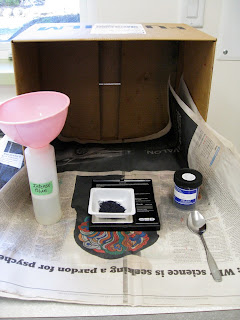Mulch
Stabilising the bare soil on a slope with jute coffee sacks that will eventually rot down. This stops the impact of raindrops eroding and compacting the soil.
Laura adds wheat chaff to the rock garden beds to build up the organic matter in the soil.
Wheat chaff, spring fern prunings and paper all go in the mix. We are aiming to support a wide range of microorganisms in the soil. Before any planting, it will never be easier to build up the soil.
Laura and Mat level out a path across Gunilla's Garden and cover it with cardboard and waste paper.
Several times a year heavy hoses are dragged across the ground to fill the fuel tanks so it is sensible to make a path through the bed.
The path is covered with fresh Douglas-fir wood chips.
In season, the path will be inoculated with mushroom spores to make a mushroom bed. It is a perfect spot for it under the shade of a large Douglas-fir tree.
Daughter Elizabeth came for a weekend visit. She inspects her 'feather-shaped' hugelkultur bed.
When asked what themed ecosystem she would like on her 'feather,' she said, "Plants that support birds." Of course. Now I need to go research and plan the ecsosytstem - something I really enjoy doing.

















































